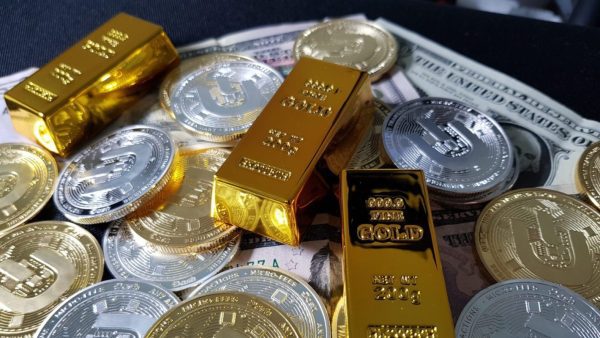
Gold and silver have been recognized as valuable metals and were highly coveted by ancient civilizations. Precious metals still have their place in a savvy investor’s portfolio in modern times. But which precious metal is best for investment purposes? And more importantly, why are they so volatile?
There are many ways to buy precious metals like gold, silver, platinum, and a host of good reasons why you should give in to the treasure hunt. So if you’re just getting started out in precious metals, read on to learn more about how they work and how you can invest in them.
- Precious metals are one way to diversify an investor’s portfolio and can act as a hedge against inflation.
- Although gold is the most common investment in the precious crystals sector, it isn’t the only one out there for investors.
- Silver, platinum, and palladium are all commodities that can be added to your precious metals portfolio, and each has its own unique risks and opportunities.
- There are a number of factors that make these investments so volatile, including supply, demand, and geopolitical issues.
- In addition to owning physical metal, investors can gain access through the derivatives market, metal ETFs and mutual funds, and mining company stocks.
Gold
We’ll start with the granddaddy of them all. Gold is unique for its durability (it doesn’t rust or corrode), malleability, and ability to conduct both heat and electricity. It has some industrial applications in dentistry and electronics, but we know it principally as a base for jewelry and as a form of currency.
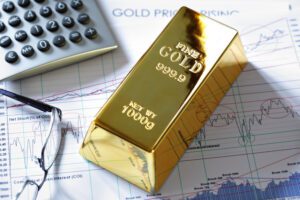
Its value is determined by the market 24 hours a day, seven days a week. Gold trades predominantly as a function of sentiment—its price is less affected by the laws of supply and demand. This is because the new mine supply is vastly outweighed by the sheer size of above-ground, hoarded gold. To put it simply, when hoarders feel like selling, the price drops. When they want to buy, a new supply is quickly absorbed and gold prices are driven higher.
Several factors account for an increased desire to hoard the shiny yellow metal:
- Systemic financial concerns. When banks and money are perceived as unstable and/or political stability is questionable, gold has often been sought out as a safe store of value.
- Inflation. When real rates of return (RoR) in the equity, bond, or real estate markets are negative, people regularly flock to gold as an asset that will maintain its value.
- War or political crises. Conflict and political upheaval have always sent people into a gold-hoarding mode. An entire lifetime’s worth of savings can be made portable and stored until it needs to be traded for foodstuffs, shelter, or safe passage to a less dangerous destination.
The United States has the world’s largest reserves of gold, amounting to 8,867.72 tons as of February 2021.1
Silver
Unlike gold, the price of silver swings between its perceived role as a store of value and its role as an industrial metal. For this reason, price fluctuations in this market are more volatile than in the market for gold.23
While silver roughly trades in line with gold as an item to be hoarded, the industrial supply/demand equation for the metal exerts an equally strong influence on its price. That equation has always fluctuated with new innovations, including:
- Silver’s once predominant role in the photography industry (silver-based photographic film) has been eclipsed by the advent of the digital camera.
- The rise of a vast middle class in the emerging market economies of the East created an explosive demand for electrical appliances, medical products, and other industrial items that require silver inputs. From bearings to electrical connections, silver’s properties made it a desired commodity.
- The use of silver in batteries, superconductor applications, and microcircuit markets.
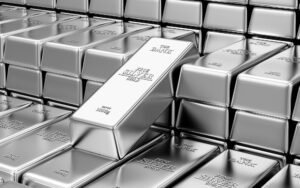
It’s unclear whether, or to what extent, these developments will affect overall non-investment demand for silver. One fact remains: Silver’s price is affected by its applications and is not just used in the fashion world or as a store of value.4
Platinum
Like gold and silver, platinum trades around the clock on global commodities markets. It often tends to fetch a higher price (per troy ounce) than gold during routine periods of market and political stability simply because it’s much rarer. Far less of the metal is actually pulled from the ground annually.
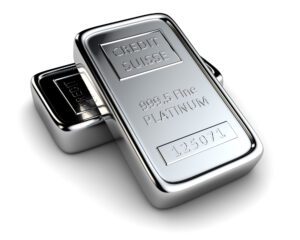
There are also other factors that determine platinum’s price:
- Like silver, platinum is considered an industrial metal. The greatest demand for platinum comes from automotive catalysts, which are used to reduce the harmfulness of emissions. After this, jewelry accounts for the majority of demand. Petroleum and chemical refining catalysts and the computer industry use up the rest.
- Platinum prices are influenced heavily by the geopolitical conditions in the countries where mining takes place as well as the supply and demand equation. In this respect, prices have been determined, in large part, by auto sales and production numbers. The drop in vehicle production and curtailed demand for autocatalysts (which accounts for a third of platinum demand) during the COVID-19 pandemic pushed prices down.5 Supplies dropped by 5% and demand increased by 21% during the first quarter of 2021 (primarily driven by the automotive industry), which could lead to an upward tick in the metal’s price.6 Demand in 2022 also increased, but by a marginal 2%.7 Keep in mind, though, that the rise in no-emission vehicles could put pressure on prices.8
- Platinum mines are heavily concentrated in only two countries: South Africa and Russia.9 This creates greater potential for cartel-like action that would support or even artificially raise platinum prices.
Investors should consider that all of these factors serve to make platinum the most volatile of all precious metals.
Palladium
Lesser known than the three metals mentioned above is palladium, which has more industrial uses. Palladium is a shiny, silvery metal used in many types of manufacturing processes, particularly for electronics and industrial products. It can also be used in dentistry, medicine, chemical applications, jewelry, and groundwater treatment.
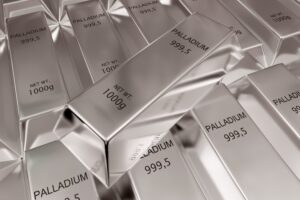
The majority of the world’s supply of this rare metal, which has the atomic number 46 on the periodic table of elements, comes from mines located in the United States, Russia, South Africa, Zimbabwe, Canada, Australia, and Finland.1011
Jewelers first incorporated palladium into jewelry in 1939. When mixed with yellow gold, the alloy forms a metal stronger than white gold. In 1967, the government of Tonga issued circulating palladium coins touting the coronation of King Taufa’ahau Tupou IV. This is the first recorded instance of palladium used in coinage 1213.
Metalworkers can create thin sheets of palladium down to one-two hundred fifty thousandths of an inch. Pure palladium is malleable, but it becomes stronger and harder once someone works with the metal at room temperature. The sheets are then used in applications like solar energy and fuel cells.
The largest industrial use for palladium is in catalytic converters because the metal serves as a great catalyst that speeds up chemical reactions. This shiny metal is 12.6% harder than platinum, making the element also more durable than platinum.14
Filling Up Your Treasure Chest
Let’s take a look at the options available to those who want to invest in precious metals.
- Commodity Exchange-Traded Funds (ETFs): Exchange-traded funds are a convenient and liquid means of purchasing and selling gold, silver, palladium, or platinum. Investing in ETFs, though, doesn’t give you access to the physical commodity, so you don’t have a claim on the metal in the fund. You will not get the actual delivery of a gold bar or silver coin.
- Common Stocks and Mutual Funds: Shares of precious metals miners are leveraged to price movements in the precious metals. Unless you’re aware of how mining stocks are valued, it may be wiser to stick to funds with managers with solid performance records.
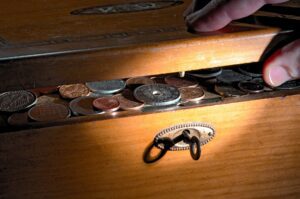
- Futures and Options: The futures and options markets offer liquidity and leverage to investors who want to make big bets on metals. The greatest potential profits and losses can be had with derivative products.
- Bullion: Coins and bars are strictly for those who have a place to put them like a safe deposit box or safe. Certainly, for those who are expecting the worst, bullion is the only option, but for investors with a time horizon, bullion is illiquid and downright bothersome to hold.
- Certificates: Certificates offer investors all the benefits of physical gold ownership without the hassle of transportation and storage. That said, if you’re looking for insurance in a real disaster, certificates are just paper. Don’t expect anyone to take them in exchange for anything of value.
Are Precious Metals a Good Investment for You?
Precious metals offer unique inflationary protection. They have intrinsic value, carry no credit risk, and cannot be inflated. That means you can’t print more of them. They also offer genuine upheaval insurance against financial or political/military upheavals.
From an investment theory standpoint, precious metals also provide a low or negative correlation to other asset classes like stocks and bonds. This means even a small percentage of precious metals in a portfolio will reduce both volatility and risk.
Precious Metals Risks
Every investment comes with its own set of risks. Although they may come with a certain degree of security, there is always some risk that comes with investing in precious metals. Prices for metals can drop due to technical imbalances (more sellers than buyers), changes in supply and demand, geopolitical issues, and other related factors. That said, during times of economic uncertainty, sellers benefit, as prices tend to shoot up.
Investing in precious metals comes with some benefits over investing in stocks, such as being a hedge against inflation, having intrinsic value, no credit risk, a high level of liquidity, bringing diversity to a portfolio, and ease of purchasing.
What Are the Best Ways to Invest in Precious Metals?
The best way to invest in precious metals is either to buy the metal outright and hold the physical form or to purchase ETFs that have significant exposure to precious metals or companies involved in the precious metals business.
What Is a Disadvantage of Investing in Precious Metals?
Precious metals have no cash flow so an individual will receive no income. If an individual holds the outright metal, there is also a storage cost associated with the investment.
The Bottom Line
Precious metals provide a useful and effective means of diversifying a portfolio. The trick to achieving success with them is to know your goals and risk profile before jumping in. The volatility of precious metals can be harnessed to accumulate wealth. Left unchecked, it can also lead to ruin.
